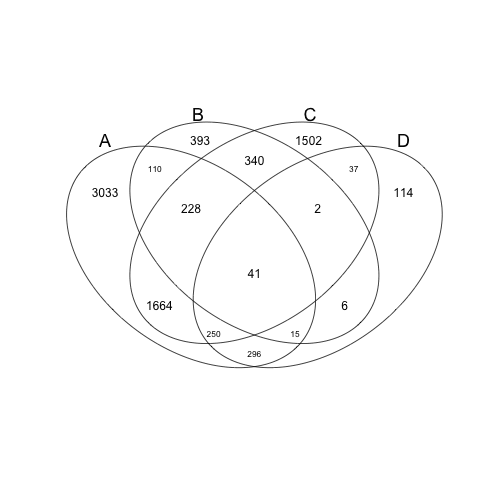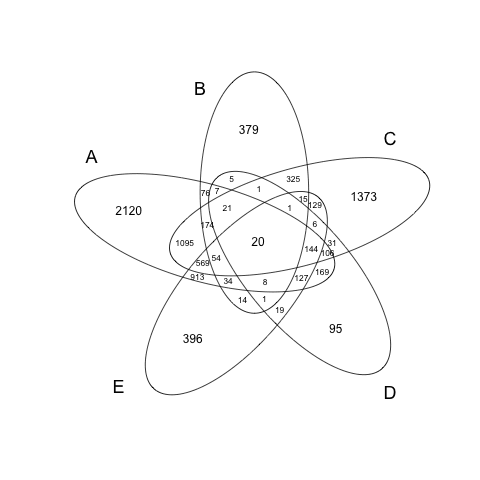toastmasterを初めて一年
早いもので、toastmasterを初めて一年!最初はネィテイブに混じって英語で発表なんてできないとおもっていたのですが、周りがおだて上手だったせいか、一年続きました。前回のtoastmastersはちょうど5回目のスピーチ!一年を振り返って、toastmasters clubで何を得られたのかという観点で、mindset skilset, enviromentという3つのポイントを話してきました。
mindsetは認知行動療法とtoastmastersの関連、skillsetは日本語と英語のスピーチで重要視するものの違い、環境はhelpfulなtoastmasters clubについて語りました。また今回はyour body speaksというのが課題なので、手持ち原稿なし、visual aidなしでの挑戦ですが、上手く決まりました!
最初の方がひどかったせいか、「いやー、上手くなったよねー!」と言われます。豚もおだてりゃじゃないですが、色々と皆さん褒め上手なので、続けられたというか、こういう形式のゆるいタイプのものも進歩には大事なんだとおもいますね。
また5回目ということでhalfway throughの飾りというものをもらいました。あと5回スピーチすると、competent communicator manualが終わり、certificateがもらえるので来年6月までにはそこに到達したいですね。一年前にはこんなこと考えていなかったので、やってよかったなとおもいます!頑張っていきましょう!

英語ジョークを実感
自分の進歩も実感できるので今回の読み原稿はすぐに作れたというか、作るのが楽しかったです。あと親切なことにtoastmaster仲間のケビンさんが練習とエディットまでやってくださるようになって、これまた勉強になります!こんな風に、いろいろ仲間ができるのもまたtoastmastersの醍醐味の一つでしょう。
なお練習方々ケビンさんに教えて貰った It provides many of the basic components you need to build a good speech – in English!!! Or-if you’re from Boston? …“a wicked good speech” (optional joke).のジョーク。こんなの受けるのかな?ケビン大丈夫かとおもっていましたが、試しにつかったら結構受けました!
ちなみにwickedはもともとは「ひどい」とか「邪悪な」とか言った意味のようですが、ボストンのスラングで「すばらしく」「すごく」といった意味になるようですね。
たしかに外国人が日本語で「「ヤバ」いくらいいいんですよ。」といったら、受けるかもしれないな。。。
ケビンさんエディット済み原稿
今回つかったスピーチ原稿です。ネイティブチェック済みなので、また何かにつかえるかもしれないとおもい掲載しておきました。個人的にはTOEFLのスピーキング用にいいかもと思っています!
Good afternoon and welcome, Fellow Toastmasters and Guest
(pause)
Today is the one-year anniversary of our club and for me.
(dramatic pause)
This one-year anniversary has been an amazing journey for me and has improved my communication skills and my life.
I hope that others have had similar experiences. Therefore, I would like to discuss three big things that we get from being a toastmaster member.
The three things are: First is a mindset. Second is a skillset. Third, and most important, is a positive environment for progress.
Let’s start with a mindset and confidence building:
(pause)
I am from Japan and English is my second language. One year earlier, my second year in The United States, I was still not confident in my English speaking skills. Due to my lack of the confidence in public speaking I joined the club last November. I did not give my icebreaker talk until last April. This means that I needed a half year before I was ready for my first talk. However, I gradually challenged myself to different speaking situations through several rounds of table topics and different meeting roles at Toastmasters meetings and made improvements.
This is mindset and confidence building by reducing “the fear response”.
A few weeks ago, XXX spoke about “The Relaxation Response” of Henry Benson at Hub Week.
Today, I want to talk about confidence building using the Cognitive-Behavioral Therapy Approach (CBT) which is a psychotherapy aimed at reducing “The Fear Response”.
CBT is an approach that uses desensitization. Desensitization is a technique used to gradually reduce “unrealistic” fears by exposing the patient (or in this case the Toastmaster speaker) to fear producing situations (i.e. a Toastmasters talk).
I practiced CBT desensitization on myself during the first six months as a toastmaster member. This helped me build my confidence. Enough confidence to speak in front of this group.
I continue with the desensitization process by trying to follow the Toastmasters manuals and by giving a talk once a month. I am feeling more and more confident in my ability to talk in front of a group.
The Second “major thing” is a skill set – a language skill set.
The competent communication manual has helped me a lot. This manual is well written and well organized. It provides many of the basic components you need to build a good speech – in English!!! Or-if you’re from Boston? …“a wicked good speech” (optional joke). One of the important things I learned from the manual is the “structure” of a speech. The manual keeps emphasizing that every speech should have a clear structure: an opening, a body, and a conclusion.
Unfortunately, my first language, Japanese, uses a different speaking structure. The Japanese language tend to focus on reasons, explanations, or justifications of our opinions. A standard structure of speech in Japanese consists of two parts; a large body section and a short conclusion. Therefore, noticing the differences in speech structures between the English and Japanese languages is very helpful to me. I would like to point out more useful things from the manual and but time is too short.
The third “big thing” is our Toastmaster General Club environment or a “good environment” for my speaking challenges and, I believe, others speaking challenges.
The members of the club are very helpful and always encouraging to me. I have made many friends in our club and want to continue making new friends. I would like to emphasize that the atmosphere of our club has helped me a lot and I believe has helped many other members.
IN CONCLUSION:
Tonight, I have discussed three big topics that are important to me. (MINDSET, SKILL SETS AND ENVIRONMENT). I believe, and hope, that they are important to you also.
(pause)…a few seconds
I have already gained a great deal from my first year as a member of our club (the toastmasters club at MGH).
(pause)…a few seconds
This is the first day of our club’s new year. I am very excited to continue my journey and to gain confidence in speaking through the training and experiences offered by Toastmasters.
THANK YOU FOR YOUR TIME AND ATTENTION
…and thanks to XXX for editing my talk
早いもので、toastmasterを初めて一年!最初はネィテイブに混じって英語で発表なんてできないとおもっていたのですが、周りがおだて上手だったせいか、一年続きました。前回のtoastmastersはちょうど5回目のスピーチ!一年を振り返って、toastmasters clubで何を得られたのかという観点で、mindset skilset, enviromentという3つのポイントを話してきました。
mindsetは認知行動療法とtoastmastersの関連、skillsetは日本語と英語のスピーチで重要視するものの違い、環境はhelpfulなtoastmasters clubについて語りました。また今回はyour body speaksというのが課題なので、手持ち原稿なし、visual aidなしでの挑戦ですが、上手く決まりました!
最初の方がひどかったせいか、「いやー、上手くなったよねー!」と言われます。豚もおだてりゃじゃないですが、色々と皆さん褒め上手なので、続けられたというか、こういう形式のゆるいタイプのものも進歩には大事なんだとおもいますね。
また5回目ということでhalfway throughの飾りというものをもらいました。あと5回スピーチすると、competent communicator manualが終わり、certificateがもらえるので来年6月までにはそこに到達したいですね。一年前にはこんなこと考えていなかったので、やってよかったなとおもいます!頑張っていきましょう!

英語ジョークを実感
自分の進歩も実感できるので今回の読み原稿はすぐに作れたというか、作るのが楽しかったです。あと親切なことにtoastmaster仲間のケビンさんが練習とエディットまでやってくださるようになって、これまた勉強になります!こんな風に、いろいろ仲間ができるのもまたtoastmastersの醍醐味の一つでしょう。
なお練習方々ケビンさんに教えて貰った It provides many of the basic components you need to build a good speech – in English!!! Or-if you’re from Boston? …“a wicked good speech” (optional joke).のジョーク。こんなの受けるのかな?ケビン大丈夫かとおもっていましたが、試しにつかったら結構受けました!
ちなみにwickedはもともとは「ひどい」とか「邪悪な」とか言った意味のようですが、ボストンのスラングで「すばらしく」「すごく」といった意味になるようですね。
たしかに外国人が日本語で「「ヤバ」いくらいいいんですよ。」といったら、受けるかもしれないな。。。
ケビンさんエディット済み原稿
今回つかったスピーチ原稿です。ネイティブチェック済みなので、また何かにつかえるかもしれないとおもい掲載しておきました。個人的にはTOEFLのスピーキング用にいいかもと思っています!
Good afternoon and welcome, Fellow Toastmasters and Guest
(pause)
Today is the one-year anniversary of our club and for me.
(dramatic pause)
This one-year anniversary has been an amazing journey for me and has improved my communication skills and my life.
I hope that others have had similar experiences. Therefore, I would like to discuss three big things that we get from being a toastmaster member.
The three things are: First is a mindset. Second is a skillset. Third, and most important, is a positive environment for progress.
Let’s start with a mindset and confidence building:
(pause)
I am from Japan and English is my second language. One year earlier, my second year in The United States, I was still not confident in my English speaking skills. Due to my lack of the confidence in public speaking I joined the club last November. I did not give my icebreaker talk until last April. This means that I needed a half year before I was ready for my first talk. However, I gradually challenged myself to different speaking situations through several rounds of table topics and different meeting roles at Toastmasters meetings and made improvements.
This is mindset and confidence building by reducing “the fear response”.
A few weeks ago, XXX spoke about “The Relaxation Response” of Henry Benson at Hub Week.
Today, I want to talk about confidence building using the Cognitive-Behavioral Therapy Approach (CBT) which is a psychotherapy aimed at reducing “The Fear Response”.
CBT is an approach that uses desensitization. Desensitization is a technique used to gradually reduce “unrealistic” fears by exposing the patient (or in this case the Toastmaster speaker) to fear producing situations (i.e. a Toastmasters talk).
I practiced CBT desensitization on myself during the first six months as a toastmaster member. This helped me build my confidence. Enough confidence to speak in front of this group.
I continue with the desensitization process by trying to follow the Toastmasters manuals and by giving a talk once a month. I am feeling more and more confident in my ability to talk in front of a group.
The Second “major thing” is a skill set – a language skill set.
The competent communication manual has helped me a lot. This manual is well written and well organized. It provides many of the basic components you need to build a good speech – in English!!! Or-if you’re from Boston? …“a wicked good speech” (optional joke). One of the important things I learned from the manual is the “structure” of a speech. The manual keeps emphasizing that every speech should have a clear structure: an opening, a body, and a conclusion.
Unfortunately, my first language, Japanese, uses a different speaking structure. The Japanese language tend to focus on reasons, explanations, or justifications of our opinions. A standard structure of speech in Japanese consists of two parts; a large body section and a short conclusion. Therefore, noticing the differences in speech structures between the English and Japanese languages is very helpful to me. I would like to point out more useful things from the manual and but time is too short.
The third “big thing” is our Toastmaster General Club environment or a “good environment” for my speaking challenges and, I believe, others speaking challenges.
The members of the club are very helpful and always encouraging to me. I have made many friends in our club and want to continue making new friends. I would like to emphasize that the atmosphere of our club has helped me a lot and I believe has helped many other members.
IN CONCLUSION:
Tonight, I have discussed three big topics that are important to me. (MINDSET, SKILL SETS AND ENVIRONMENT). I believe, and hope, that they are important to you also.
(pause)…a few seconds
I have already gained a great deal from my first year as a member of our club (the toastmasters club at MGH).
(pause)…a few seconds
This is the first day of our club’s new year. I am very excited to continue my journey and to gain confidence in speaking through the training and experiences offered by Toastmasters.
THANK YOU FOR YOUR TIME AND ATTENTION
…and thanks to XXX for editing my talk


















